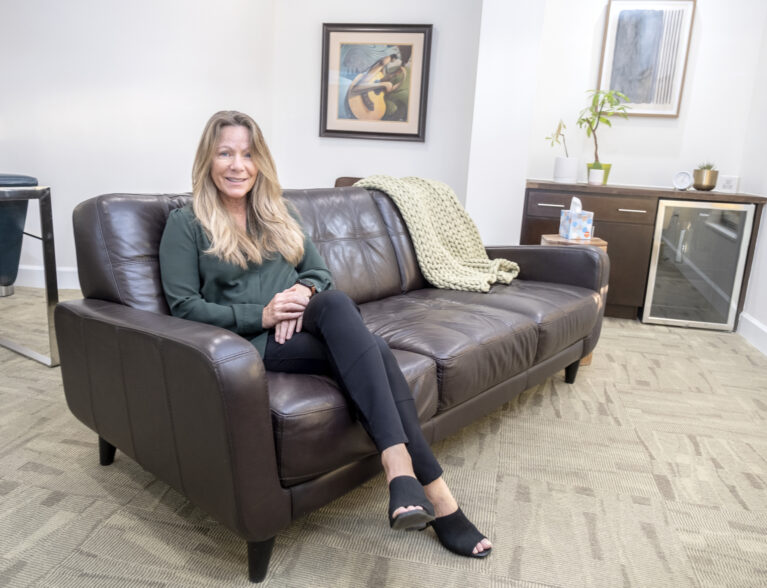
After a day in school, kids need to get their wiggles out. But unfortunately, due in large part to shrinking recess and independent play times, they don’t get much opportunity to do that.
A recent article in U.S. News & World Report reported that starting in the early 2000s, many schools in this country cut back or even eliminated recess in favor of more instructional time. Since 2001, the average weekly recess time has declined by 60 minutes.
Statistics now show there are major declines in mental health for our youngest citizens and scores of experts say not learning to play independently is a major cause.
Dr. Whitney Legler, a neuropsychologist/psychologist with a practice in Vero Beach, says kids are stressed beyond belief – and that’s not just a medical professional speaking, but also the mom of a high school student.
“I’ve been doing this for 21 years,” she says, “and this lack of free time has happened gradually.”
Anxiety and depression among school-age children and teens in the United States are at an all-time high, and in 2021, child and adolescent mental health was declared a national emergency. Legler says the pandemic had some effect, but the homework and structured play conundrum has been increasing for years with a corresponding loss of dreamy, free-play time.
Findings published in the Journal of Pediatrics support her belief, suggesting that the rise in mental health disorders is due in some significant degree to a decline over decades in opportunities for children and teens to play, roam and engage in activities independent of direct oversight and control by adults.
Although well intended, adults’ drive to guide and protect children and teens has deprived them of the independence they need for mental health, contributing to record levels of anxiety, depression and suicide among young people.
JSTOR, an electronic archive of leading journals across many academic disciplines, states that until the mid-20th century many school districts didn’t assign homework for K-6 classes, and very few assigned it for students in third grade or younger.
That remained true until 1983, when publication of a government report, “A Nation at Risk,” helped jump-start a “back to basics” agenda, including emphasis on drill-style homework. In the decades since, programs like high-stakes testing, the No Child Left Behind Act and the Common Core standards have kept pressure on schools – and students.
Legler says it has become the norm for many adults and kids to classify free time or leisure time as wasted time. “We need to relearn that it’s OK to have downtime. It’s OK to have nothing to do for 10 minutes. Kids with more free time are more creative.”
The American Psychological Association (APA) lists the many benefits of unstructured play – play that isn’t organized by adults and helps kids build resilience, flex their creative muscles and engage organically with their peers.
According to the APA, unstructured play is a fundamental necessity for children to thrive physically, emotionally, mentally and socially.
- Active play like backyard swinging and games of tag helps build healthy bodies, increase energy and reduce tension and anxiety.
- Risky, challenging play like jumping from manageable heights helps children learn to make decisions, calibrate risks and manage emotions.
- Interactive play with siblings, parents or other household members teaches empathy, reciprocity, sharing, problem-solving, perspective-taking and cooperation, while fostering feelings of connection and acceptance.
- Creative play helps children make sense of life around them as they create art or music, build forts, tell stories and try on different identities.
The American Academy of Pediatrics suggests these ways to open the door for children to play simply for the joy of it:
- Tell stories to your child and ask questions about what they remember.
- Give your child time and space to act out imaginary scenes, roles and activities. You can provide dress-up clothes and props but allow play to be unstructured. Remember that some boredom allows for creativity.
- Allow your child to move between make-believe games and reality – for example, playing house and helping you with chores.
- Encourage your child to try a variety of movements in a safe environment – for example, hopping, swinging, climbing and doing somersaults.
- Balance media use and screen time with “real world” activities. Age-appropriate media can have benefits for older children, especially if you watch and play with them. But real-time social interactions and play are much better for children than digital media for learning. Create a family media plan to set some ground rules such as no media at the dinner table or in the bedroom.
Legler also says parents do children a disservice by trying to shield them from disappointment and difficulty. “You can’t avoid disappointment for the first 17 years of your life and grow up to be a functioning person,” she says.
Dr. Whitney Legler is a neuropsychologist/psychologist. She has a master’s degree and Ph.D. and has completed externships at U.S. Naval Hospital in Illinois and Lakeview Neurological Rehabilitation Hospital in Wisconsin. She is certified by American Psychological Association and National Academy of Neuropsychology. She is accepting new patients at Legler Psychology Associates, 3003 Cardinal Dr., Vero Beach. 772-221-5554.



